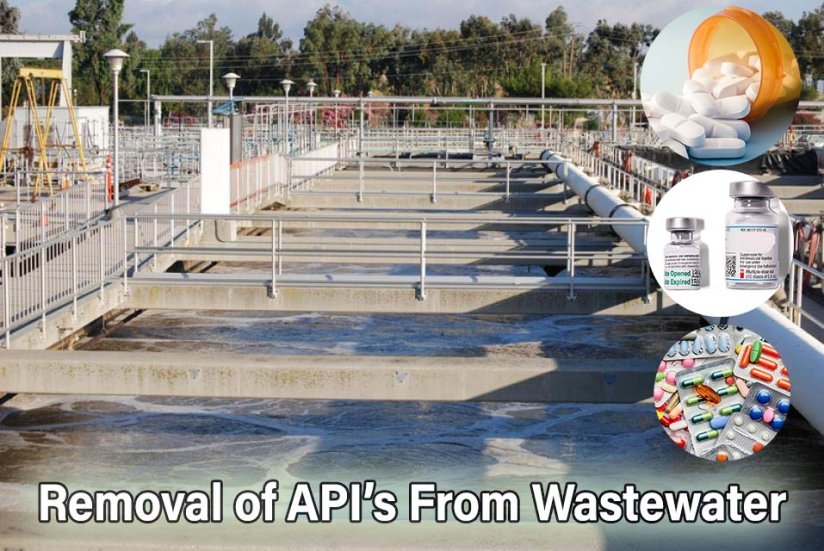
Water Purification
Removal of Active Pharmaceutical Ingredients/Emerging Contaminants in the Environment
Pharmaceuticals in the Environment
By Gabriela Porto Da Cruz – Coftec
Pharmaceuticals in the environment (PiE) are an increasing concern as they are found in water used for irrigation and drinking, which leads to environmental and health risks such as the surge of antibiotic-resistant microorganisms (AMR) due to antibiotic APIs, even at low concentrations. These micropollutants can reach the environment by disposal of medication, excretion by the human body in household wastewater, and as APIs (active pharmaceutical ingredients) from pharmaceutical plants. The long-term effects of pharmaceuticals in the environment on human health and aquatic life are not fully known, which is why it is important to review conventional methods to also target APIs to guarantee good water quality.
Removing APIs from Wastewater
APIs are difficult to remove from wastewater by conventional methods, especially to minimum levels. Primary and secondary treatments alone are ineffective in the removal of APIs in wastewater, as the levels of these materials are often too low to be addressed by primary treatment. Some the compounds are not completely degraded by biological treatment. There are different methods being implemented in wastewater treatment plants to remove APIs, each with its own advantages and limitations.

Thermal oxidation for example requires collection, transport and incineration in special facilities, which contributes to the emission of greenhouse gases. This approach is expensive due to cost of energy and fuel.
Advanced oxidation processes (AOPs)
Advanced oxidation processes (AOPs) are a group of technologies that use highly reactive oxidizing agents, such as hydrogen peroxide, ozone, or UV light, to break down and remove pollutants from wastewater. These processes are particularly useful for treating wastewater that contains recalcitrant organic compounds, such as persistent organic pollutants (POPs), pharmaceuticals, and personal care products (PPCPs), which are difficult to remove using traditional treatment methods.
AOPs can also be used to remove inorganic compounds, such as heavy metals and nitrogen compounds, from wastewater. The efficiency of AOPs depends on the specific process and the characteristics of the wastewater being treated.
However, AOPs can be very effective at removing a wide range of pollutants, making them a valuable tool for treating wastewater and protecting the environment.
Activated Carbon
Activated carbon is a commonly used method for treating wastewater, especially for the removal of dissolved organic compounds and heavy metals. The high porosity and large surface area of activated carbon make it highly effective at adsorbing impurities in the water, which is why it is often used in water treatment plants. Activated carbon is also used in other types of wastewater treatment systems, such as industrial wastewater treatment plants, to remove specific pollutants.
Activated carbon can be used in different forms, like powdered activated carbon (PAC) and granular activated carbon (GAC). The adsorption process of activated carbon happens when pollutants in the water come into contact with the carbon’s surface, and then they stick to the carbon’s surface. The adsorption process depends on different factors, like the nature of the pollutants, the pH of the water, the temperature, and the contact time.
However, activated carbon has some limitations, like it is not effective at removing all types of pollutants, like nitrates and phosphates. Additionally, activated carbon requires regeneration and management, which can be costly and time-consuming. The production process for activated carbon can also have negative environmental impacts.
Membrane Bioreactor
A Membrane Bioreactor (MBR) is a wastewater treatment technology that combines a biological treatment process (such as an activated sludge process) with a membrane filtration process (such as microfiltration or ultrafiltration). The biological process uses microorganisms to break down organic matter in the wastewater, while the membrane process removes the resulting bacteria and other particles. This results in a highly treated and clarified effluent that meets strict discharge regulations and is thus suitable for discharge or reuse. MBRs are commonly used in municipal and industrial wastewater treatment plants, and can also be used for treating wastewater from food and beverage processing, pharmaceuticals, and other industries. They are known for their high treatment efficiency, small footprint, and low energy consumption compared to conventional wastewater treatment technologies.
Tertiary Treatment or ‘Polishing’ of Wastewater
It is a common to subject wastewater to further treatment in order to remove any remaining impurities and to meet discharge standards set by the government. The treatment process at the plant may not completely remove all contaminants, such as nutrients or bacteria, and polishing can help to achieve the necessary level of water quality before it is released into the environment. Additionally, this ‘polishing’ step may be used to further remove any odors or other aesthetic concerns. Ultimately, polishing is important for protecting public health and the environment by ensuring that the water is safe for human contact and will not have negative impacts on local ecosystems.
Nyex
Nyex, from Arvia Technolgies, is a highly energy-efficient and environmentally friendly water treatment technology, able to reduce APIs and Endocrine Disrupting Chemicals (EDCs) to trace levels. The technology uses a combination of electrochemical oxidation and adsorption media that regenerates and adsorbs the materials it oxidises at the same time, resulting in no sludge and no chemicals. The adsorption media adsorbs pharmaceutical residues in the water as it flows through the reactor unit while a low electrical current fully mineralises the adsorbent components. It requires relatively low power and low maintenance, thus reducing operational costs. Arvia’s Nyex treatment systems have already been used to reduce pharmaceutical residues to below the limit of detection (LOD) in the UK, Europe and China. The technology can also be used in water reclamation and reuse, drinking water treatment, point of entry treatment and used as part of a treatment train.
Arvia Technology products, including Nyex are available via Coftec in Ireland.
Conclusion
The goal of wastewater treatment is to produce a high-quality, safe water that meets the specific discharge or reuse requirements. This process involves removing contaminants and pollutants from the wastewater to make it safe for discharge into the environment or for reuse in various applications. The specific requirements for discharge or reuse will vary depending on the type of wastewater being treated and the laws and regulations in place. Different treatment methods are available but the end result of the treatment process is clean water that is safe for the environment and can be used for a variety of purposes, such as irrigation, industrial processes, and even drinking.
Are you facing issues with API’s or other such contaminants in your wastewater stream? Coftec can help. We have access to a range of technologies to address these problems which our in-house design team will build into a practical solution to address the problem at hand.
Call us today to discuss how we can help.
Contact Us
Tel: +353 (0)91 844 356
email: info@coftec.ie
